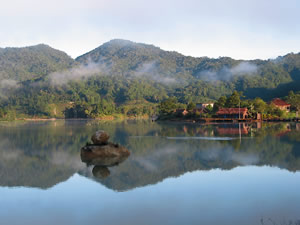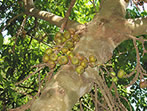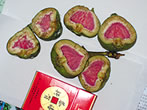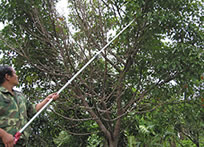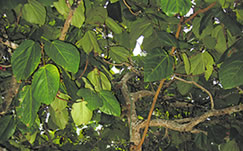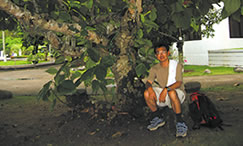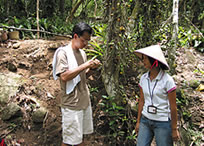| Index > BRH News Winter 2003 |
|
||
| From Lab Breeding and Collection Diary Lab: Exploring mutualistic interactions between plants and insects |
||
|
|||||||
|
 |
1. The lakeshore on mountains 800m above sealevel 2. The syconia of the Ficus hispadia 3. There were 5 or 6 female adult fig wasps, which come in this siconium for laying eggs. 4. A collection of the leaves and syconia of the Ficus superba 5. Looking for fig wsps on the sycnia of the Ficus hispida (With the staff of the botanicalgardens) 6. Taking a breake in the shade of a Ficus auriculata tree |
|
Hainan Island is located at the extreme southern end of China and is on the same latitude as Hawaii. It is an island, but its circumference of about 800 kilometers makes it roughly the same size as Kyushu. We went to Hainan to obtain clues about the one to one co-evolution of the fig and the fig wasp. Our field research and collection involved walking around a forest. We were constantly in danger of getting lost in the forest, so our safest policy was to go with natives who knew the local mountains and forest well. This time, we went with botany teachers from Hainan Normal University. When we found fig trees, the first thing we did was to take photographs, record the collection data, take twigs with several leaves (with the syconia, if possible), place them in a small plastic bag, and take them to our lodgings. Next, we cut them up into thin pieces with scissors, put them in a plastic bag with silica gel, and let them dry. It was difficult to catch the fig wasp, our primary interest. There weren't many figs with the syconia attached, and not all those figs with syconia had wasps. We sometimes found a large fig tree with a lot of syconia, but we couldn't reach them or the leaves, so we gave up. The forest is filled with mosquitoes and leeches. When the rains suddenly come, nature can be harsh. But after a day spent collecting--particularly a day when we brought back a lot of specimens--the meal was particularly tasty. On this expedition, we got 27 species of figs, and we got fig wasps from 14 of those. We hope these specimens will contribute to our understanding of the co-evolution of the fig and the fig wasp. (Zhi-Hui Su, Ph.D.) |
| BRH News |
|
Please close a window with the button of a browser who are turning off Javascript. |
